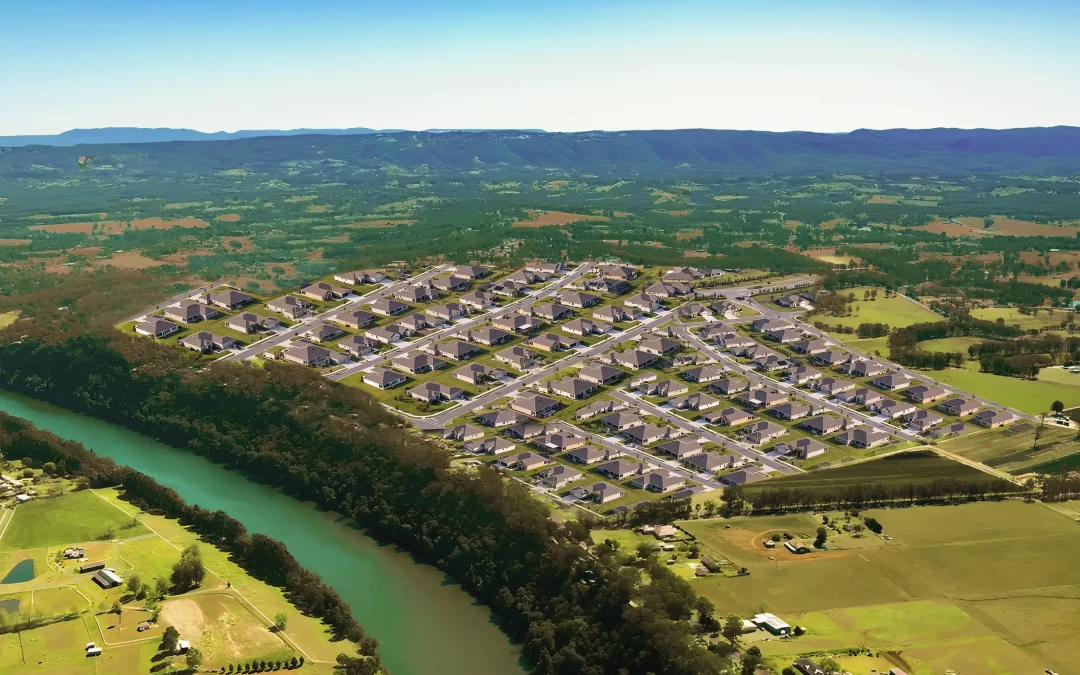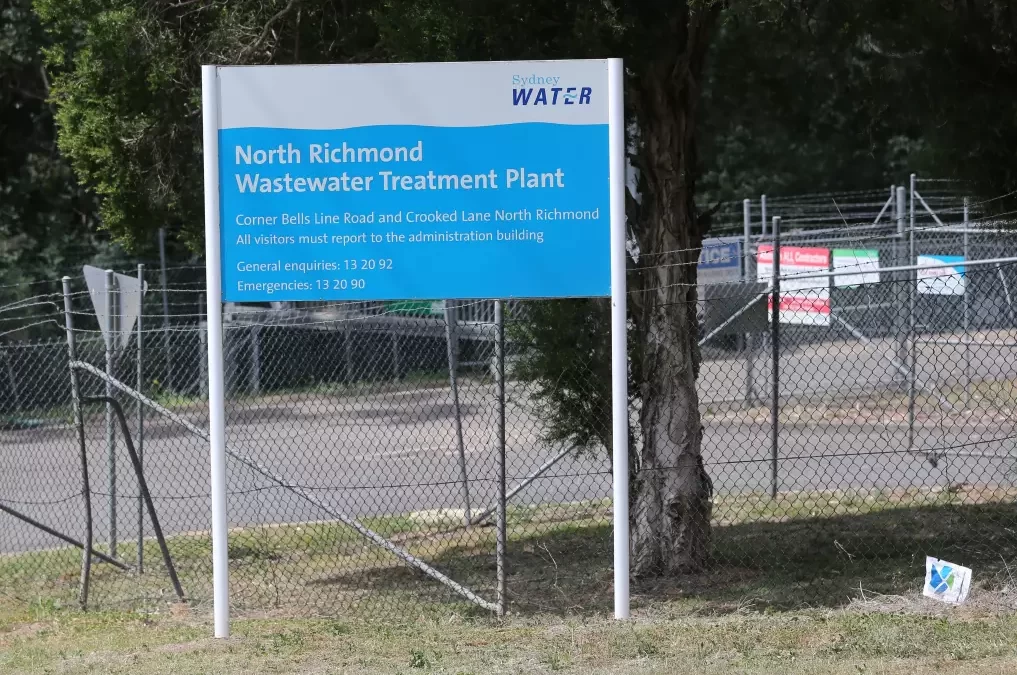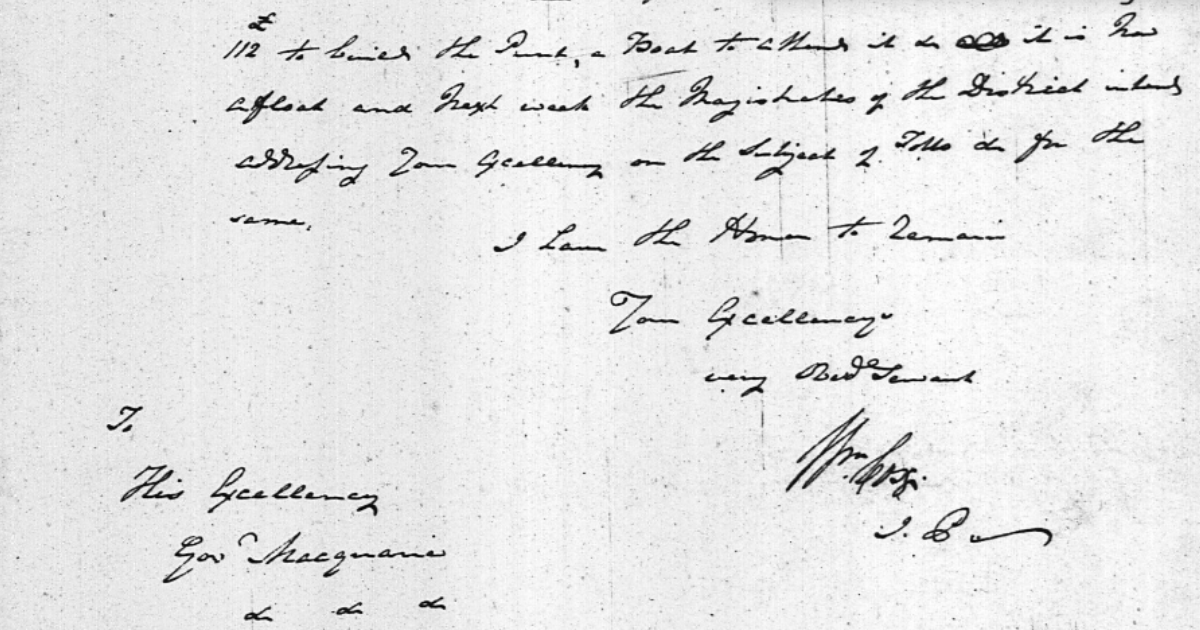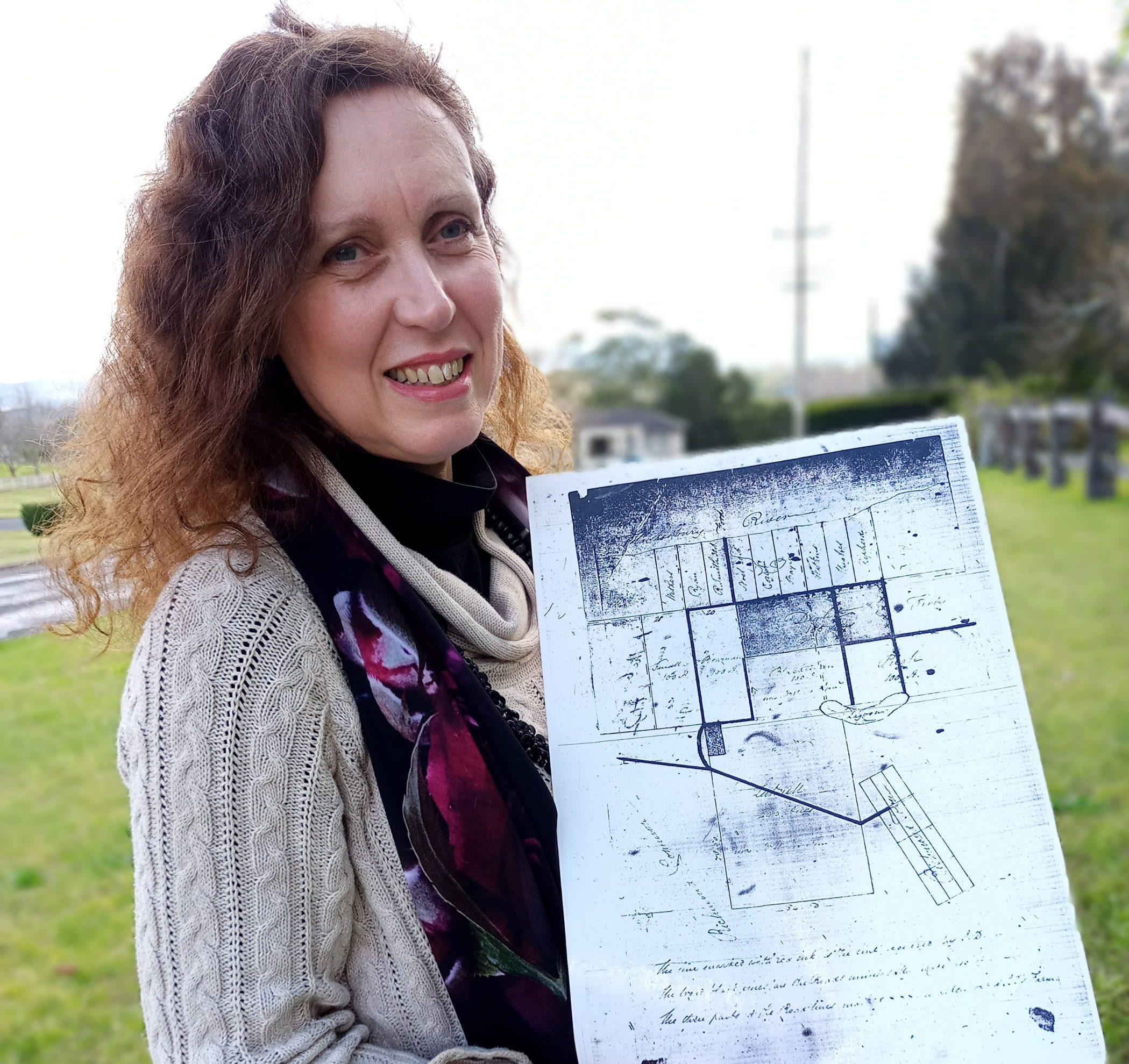Stylecraft & Co., approaching...


Stylecraft & Co., approaching...

An unprecedented surge in development west of...

Hawkesbury City Council has stated it is not responsible...
Special Feature
By Samantha Magnusson
The discovery of a letter from renowned road builder and explorer William Cox to Governor Lachlan Macquarie has shed new light on the historical importance of Richmond’s historic Durham Bowes property and surrounds. This significant find identifies the area as part of the New South Wales first-ever stock route, heightening concerns about the Minns’ government’s plans to construct a road next to the historic home and through the historic site as part of the third river crossing at Richmond.
The letter was unearthed from the Kingswood Archives by Durham Bowes’ current owners, Penny and Robyn Sharpe. It brings to the fore the pivotal role Durham Bowes played in the early colonial era. Dated November 12, 1820, the letter highlights Cox’s efforts to extend the stock route from Richmond Road (also built by Cox) to the road on the west side of the river that led to Howes track (Putty Road) . This route allowed cattle to traverse from the Hunter Valley, cross the river via a punt, rest at Ham Common adjacent to Durham Bowes (owned by early settler John Dight), and then continue to Sydney to cater to the burgeoning population’s needs.

Photo: Letter from William Cox to Governor Macquarie. [Source: Museums of History NSW – State Archives Collection
Index to the Colonial Secretary’s Papers, 1788-1825 Ship: per “Minerva” | Citation: [4/1747], pp.239-41 | Reel No: 6050 | Start Date: 12/11/1820]
If the bridge goes ahead as planned, it won’t be the first time significant heritage considerations have been ignored to build infrastructure projects in the Hawkesbury. Historic Windsor bridge was demolished and delisted from the state heritage register and Australia’s oldest public square, Thompson Square was bastardised when the former state government built the new Windsor bridge overriding heritage considerations.
Cox writes in the letter: “Anderson is going on well with the Road party. We began at this side of the River where the Punt is to be fixed and on Completing the Road from thence to the Common by Mr Dight’s House. This is what Mr Meehan first Marked and will be the great thoroughfare for what Cattle is removed between this & Newcastle (in Mr Howes track) and that is bought to the Capital, at Mr Dight’s House they are on the Common & will get onto the Richmond Road without driving through the Village of Richmond at all…”
The full transcript of the letter can be read below while the original letter can be viewed here: https://search.records.nsw.gov.au/primo-explore/search?query=any,contains,inx-99-31011&tab=default_tab&vid=61SRA&offset=0
The state government has plans to construct a road through the site, to connect to the planned third crossing at Richmond. Yet despite the government’s claims that this route minimally impacts heritage, no comprehensive Statement of Heritage Impact has been undertaken
The area which includes Durham Bowes, Hobartville and St Peter’s church, are all State heritage listed properties with considerable historical significance. While the state government cites heritage concerns in other cases, such as the nearby local heritage listed Bronte House, the same level of concern has not been demonstrated for the State heritage listed Durham Bowes. The proposed “Preferred Option” by Transport for NSW is set to significantly widen the road thoroughfare of Inalls Lane (which lies next to Durham Bowes), significantly increasing traffic flow including heavy vehicles and diverting the road through the historical area.
Penny Sharpe argues that Transport for NSW has sidestepped its responsibilities outlined in the Burra Charter, which outlines Australia’s cultural heritage conservation standards.
“This neglect jeopardises the 1820 road, an integral part of Governor Macquarie’s “Great Roads” network built by William Cox just five years after the Blue Mountains road. This historic road holds exceptional significance and potential for preserving vital archaeology from the colonial and convict eras,” Sharpe said.
Despite prior knowledge, Transport opted against adhering to the Burra Charter’s best practices, Sharpe said. They disregarded the requirement for a Statement of Heritage Impact (SoHI), essential for identifying and assessing heritage items—both listed and unlisted—to mitigate potential impacts and inform decisions. This failure occurred despite their awareness of the 1820 road and its cultural importance before selecting the Preferred Option in June 2021.

Photo: Durham Bowes owner Penny Sharpe holding a plan from the Surveyor General’s Sketch Book c1828 from State Archives. It shows the road leading from the Hawkesbury River (at top) and running along the boundary of William Bowman’s grant to the Dight’s highland farm where the road curves around and meets what is now Castlereagh Road.
Late last year Transport for NSW said the “Preferred Option” would have less heritage impact than other routes even though it admitted not having investigated the heritage significance of the site through a “Statement of Heritage Impact”.
“The Strategic Heritage Impact Strategy recommends the route in the road corridor adjacent to your property because it has a reduced level of impact to listed heritage items and potential archaeological remains when compared to other routes. It also recommends that further investigation is required in the form of a non-Aboriginal archaeological impact assessment and Statement of heritage Impact for the areas that will be impacted by the route. This will allow Transport to understand the nature and extent of archaeological remains in the alignments, their potential significance , and the impacts of the proposal,” TNSW Senior project manager Tim Webster said in the letter dated 20th December 2022. The Sharpes said they have not been contacted by TNSW since.
Investigation works along the proposed new bridge route are well advanced. These include collecting traffic data, ground and geotechnical works, digging pits to test soil and pavement composition and the use of a barge and drill rig on the Hawkesbury River.
The full transcript of Governor Macquarie’s letter can be read below.
